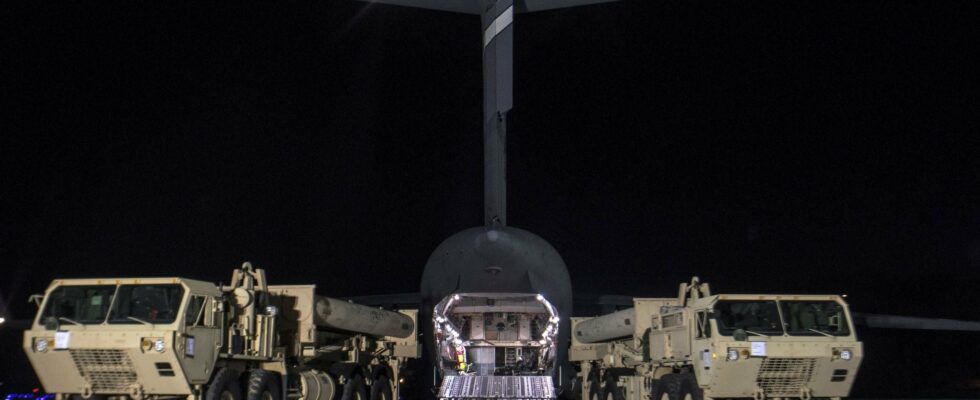The Pentagon announced on Sunday October 13 the deployment in Israel of an American high-altitude anti-missile defense system THAAD (Theater High Altitude Area Defense). “It is one of the most powerful anti-missile weapons in the US military, capable of intercepting ballistic missiles at ranges of 150 to 200 kilometers (93 to 124 miles) and with a near-perfect success rate during tests”, reports the American media CNN. While the war in Lebanon and that of Gaza is coupled with an escalation between Iran and Israel, the United States remains alongside its allies.
Defense Minister Lloyd Austin “authorized the deployment of a THAAD battery and a team of American military personnel to Israel” to help strengthen the Jewish country’s air defenses “following the unprecedented attacks by the Iran against Israel on April 13 and again on October 1,” Pentagon spokesperson General Pat Ryder said in a statement. Because tensions are not easing: on Sunday October 13, Iran said it was “ready to face a war situation”, according to its head of diplomacy, Abbas Araghchi.
General Pat Ryder specifies that a THAAD battery had already been deployed in Israel following the Hamas attacks of October 7, 2023, and before that in 2019. In order to operate them on the ground, the American army will send approximately 100 soldiers in Israel, promises the Pentagon.
“Generally speaking, each battery consists of six launchers mounted on trucks, 48 interceptors and radio and radar equipment. 95 soldiers are needed to operate a single system of this type,” details the daily. The Times of Israel. THE THAAD consists of four main components: the interceptor, the launcher, the radar and the fire control system. Each launcher, capable of carrying up to eight interceptors, takes up to 30 minutes to recharge.
According to a report published in April 2024 by the Congressional Research Service, the US military has a total of seven THAAD batteries. The system is considered complementary to that of the Patriot (an emblematic missile defense system of the United States), but it can defend a wider perimeter. Furthermore, the range of the THAAD system is greater than that of the Patriot.
Means of “deterrence”
Note that Israel already has several anti-missile systems designed to shoot down incoming projectiles. “THAAD will not act alone in Israel’s defense and could act as an additional ‘deterrent’ in the event of an attack,” explained CNN military analyst Cedric Leighton, a former US Air colonel. Strength. While THAAD can be quickly deployed by US Air Force cargo planes like the C-17 and C-5, the Pentagon has not given a timetable for when it will be active in Israel.
The name THAAD comes from the way the air defense system works – intercepting incoming ballistic missiles during their final phase of flight – called “terminal phase” – by crashing into them (“terminal phase”).hit-to-kill”). It has the ability to intercept targets inside and outside the atmosphere.
In service since 2008
The particularity of THAAD systems is that they do not carry warheads. “Instead, they rely on the kinetic energy of the impact to destroy incoming missiles. THAAD radars are capable of detecting and tracking incoming missiles at ranges of 870 to 3,000 km” , indicates the British magazine, The Week. Production models of the THAAD system have never failed to intercept incoming targets during tests, assures the Missile Threat Project of the Center for Strategic and International Studies.
The American THAAD missile defense system has been in service since 2008. Three years later, Washington sold it for the first time to one of its allies, the United Arab Emirates. The deal included two anti-missile batteries, 96 missiles, radars, training and logistics, the Pentagon said. In 2017, the United States deployed its anti-missile shield in South Korea in response to threats from North Korea. Enough to change the strategic balance between the two countries, limiting Pyongyang’s destructive power. In 2022, the THAAD is used for the first time to destroy a medium-range ballistic missile during an attack by the Houthi rebels, who control large swaths of Yemen.
